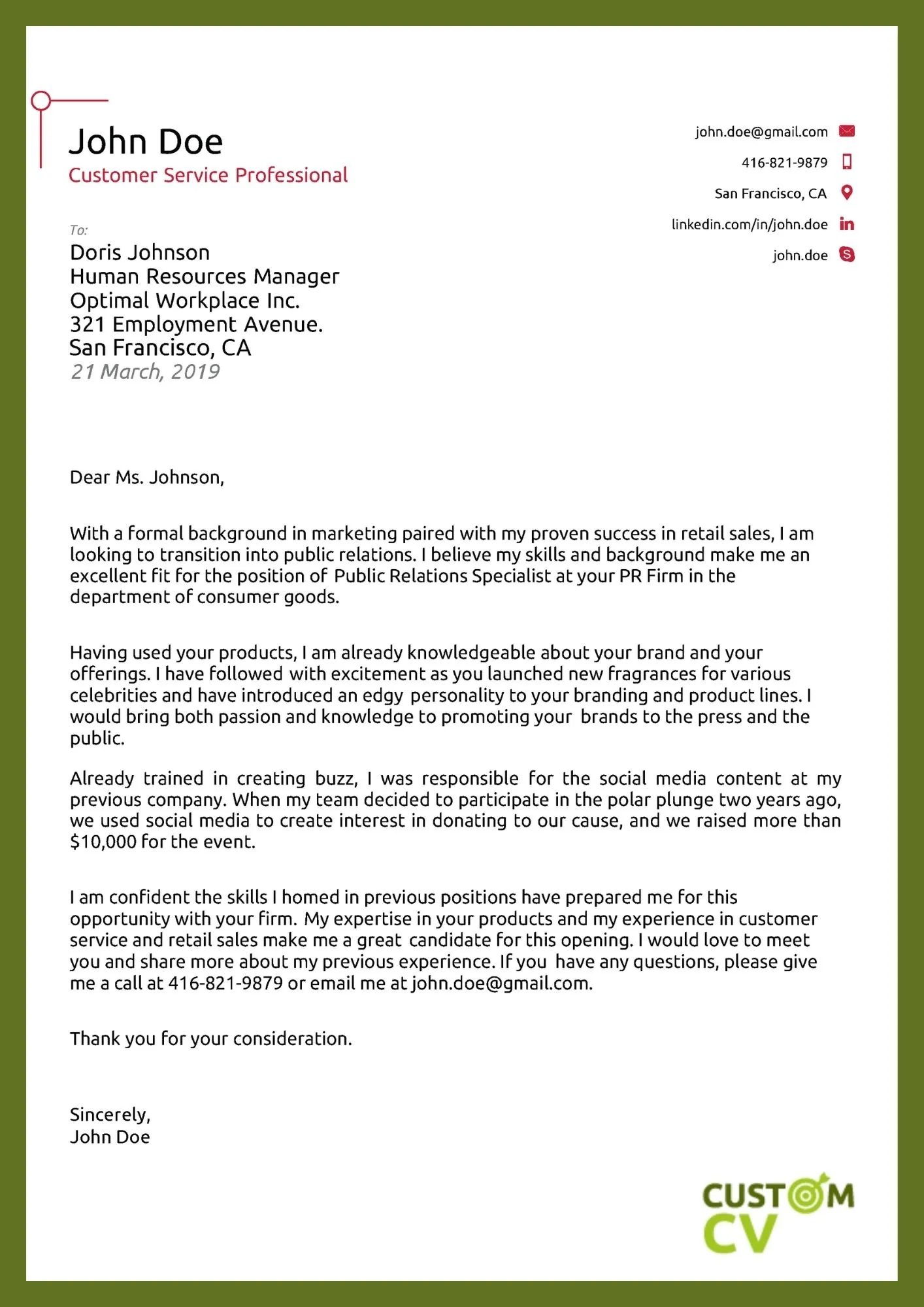What is a Cover Letter
A cover letter is a crucial document that accompanies your resume when applying for a job. It serves as an introduction, allowing you to highlight your key skills, experiences, and qualifications in a way that a resume alone cannot. Think of it as your personal sales pitch, designed to persuade the hiring manager that you’re the ideal candidate. Writing a powerful cover letter is essential in today’s competitive job market, as it gives you the opportunity to make a strong first impression and differentiate yourself from other applicants. It is more than just a formality, but a chance to demonstrate your personality, enthusiasm, and understanding of the role you’re applying for. A well-crafted cover letter can significantly increase your chances of getting an interview.
Purpose of a Cover Letter
The primary purpose of a cover letter is to provide context to your resume. While your resume lists your skills and experiences, your cover letter explains why you are the perfect fit for the specific job and the company. It allows you to elaborate on specific achievements, demonstrate your understanding of the company’s needs, and express your genuine interest in the position. It also provides an opportunity to showcase your communication skills, writing ability, and personality. A well-written cover letter can bridge gaps in your resume, such as career changes or employment gaps, and highlight your unique value proposition. Furthermore, it allows you to align your skills and experiences with the job description and the company’s values, demonstrating that you have done your research and are genuinely interested in the opportunity.
Key Elements of a Cover Letter
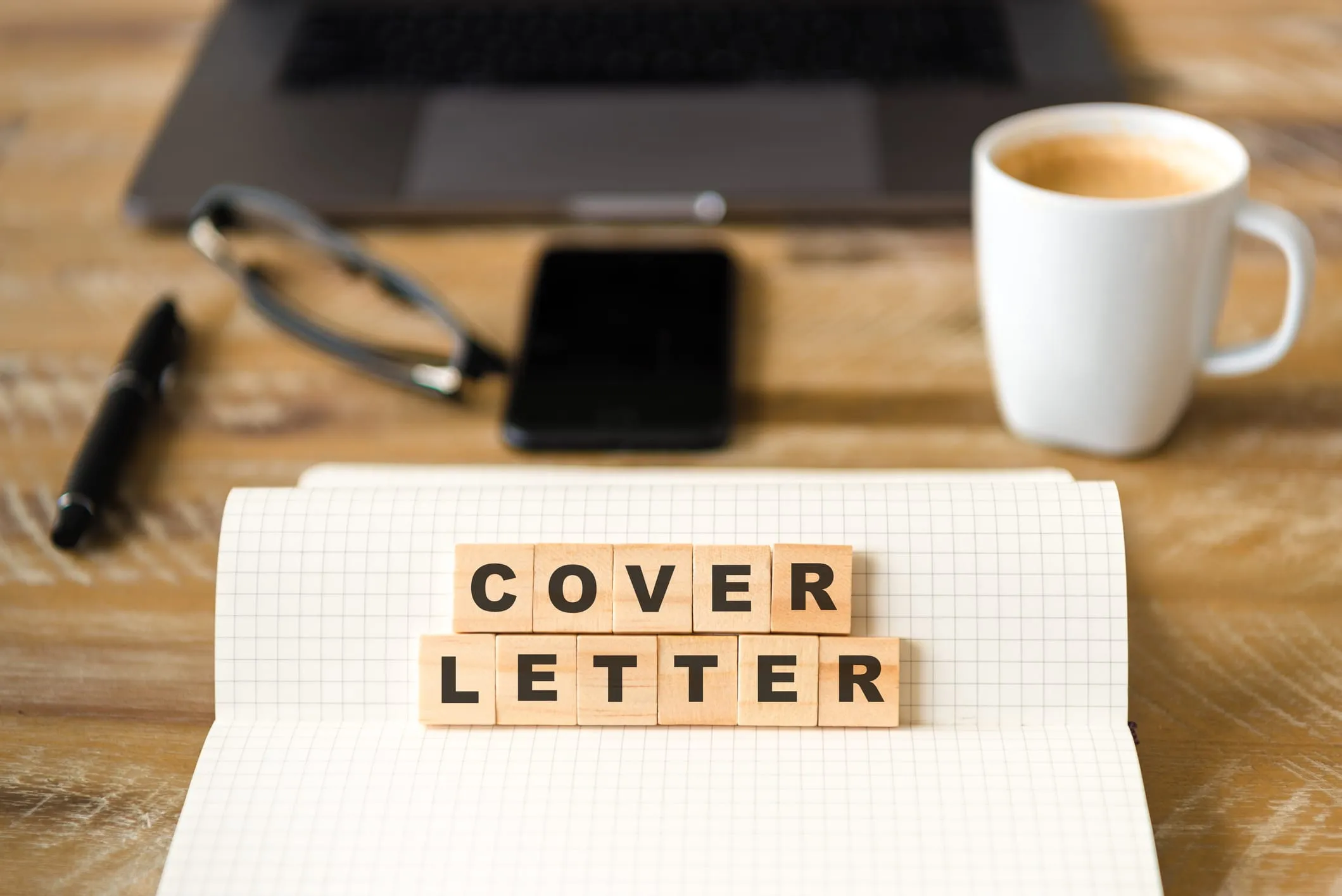
A successful cover letter contains several key elements that work together to create a compelling narrative. Each part serves a specific purpose and contributes to the overall effectiveness of the letter. These elements ensure that your cover letter is informative, professional, and engaging, increasing your chances of making a positive impression on the hiring manager. Mastering these components will enable you to craft a cover letter that effectively communicates your qualifications and highlights your suitability for the job.
Contact Information
At the top of your cover letter, include your full name, phone number, email address, and optionally, your LinkedIn profile URL. This information ensures that the hiring manager can easily contact you. Make sure the email address is professional and the phone number is up-to-date. It’s also wise to include your location (city, state) to give the employer a quick reference. The contact information should be clearly presented and easy to find, making it simple for the recruiter to reach out to you if they are interested in your application. Review it carefully to avoid any typos or errors.
Date
Below your contact information, include the date you are sending the cover letter. This helps the employer know when you submitted your application and allows for easy tracking. The date should be formatted professionally (e.g., July 19, 2024). Ensure that the date accurately reflects when you are submitting your application. This ensures that the application seems current and professional.
Recipient’s Information

Directly below the date, include the hiring manager’s name and title (if known), and the company’s name and address. Addressing the letter to a specific person is always preferred, as it shows that you have done your research and are genuinely interested in the role. If you can’t find a name, try to address it to the hiring manager, or the title of the role. If you are unsure about the name, researching on LinkedIn or the company website can be very beneficial to personalize your letter.
Salutation
Use a professional salutation such as “Dear Mr./Ms. [Last Name]” or “Dear Hiring Manager,” if the name is unavailable. Avoid overly casual greetings. Using the correct salutation sets a tone of professionalism from the outset. If you know the hiring manager’s name, it helps personalize the letter. If you don’t know their name, ‘Dear Hiring Manager’ is the next best option.
Opening Paragraph
The opening paragraph should grab the reader’s attention. State the position you are applying for and where you saw the job posting. Briefly mention why you’re interested in the role and the company. This is your chance to make a strong first impression and hook the reader. Be clear and concise, immediately establishing your purpose. Show your enthusiasm for the opportunity and briefly highlight a key skill or experience that aligns with the job requirements.
Body Paragraphs

The body of your cover letter is where you showcase your skills and experience in detail. Use these paragraphs to demonstrate how your qualifications align with the job requirements. Provide specific examples to support your claims. Focus on what you can offer the company, not just what you want from the job. Tailor each letter to the specific job and company, highlighting the most relevant aspects of your background.
Highlighting Relevant Skills
Identify the key skills required for the job and explicitly state how you possess them. Use keywords from the job description to show that you meet the necessary criteria. Provide examples of situations where you successfully applied these skills. This shows the hiring manager that you have the practical abilities necessary for the role. Align your skills with the job requirements to prove you are an ideal candidate.
Showcasing Accomplishments
Instead of simply listing your responsibilities, describe your achievements. Focus on what you accomplished in previous roles and quantify your results whenever possible. Use the STAR method (Situation, Task, Action, Result) to structure your examples and provide context for your successes. Demonstrate how your accomplishments have benefited past employers and how they can benefit the prospective employer. This helps to illustrate your abilities.
Quantifying Achievements
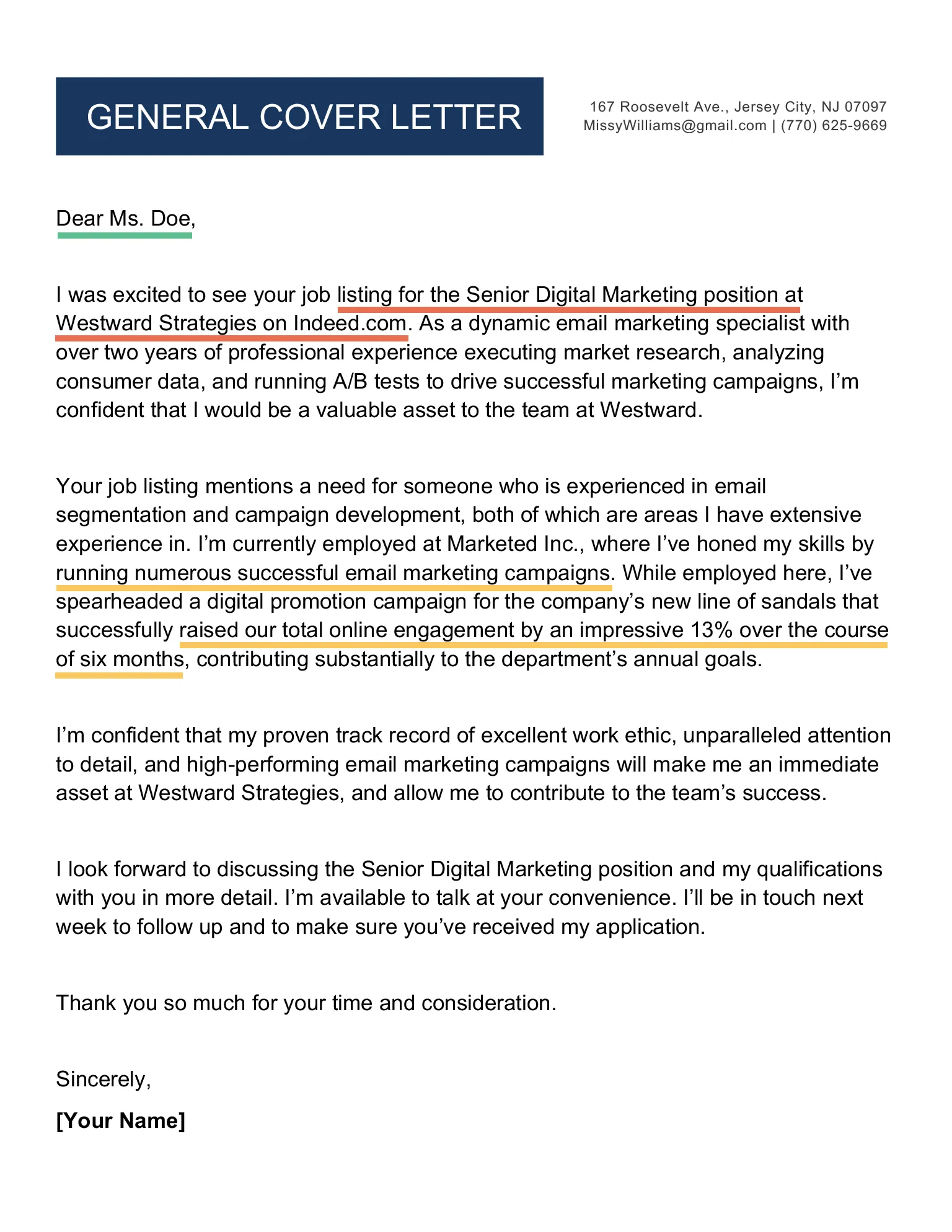
Whenever possible, use numbers and data to quantify your achievements. For example, instead of saying “Improved sales,” say “Increased sales by 15% in one quarter.” Quantifiable results make your accomplishments more impactful and provide concrete evidence of your abilities. Use numbers, percentages, and specific metrics to illustrate the impact of your contributions. This helps the hiring manager understand the direct benefits you can bring to the company.
Closing Paragraph
In the closing paragraph, summarize your key qualifications and reiterate your interest in the position. Thank the hiring manager for their time and consideration. Express your enthusiasm for the opportunity and your eagerness to discuss your application further. Reiterate your interest in the position and company, showing that you are sincerely interested in the role.
Call to Action
Include a clear call to action. State that you look forward to hearing from them and that you are available for an interview. Provide your contact information again, just in case it’s needed. Make it easy for the hiring manager to take the next step by explicitly stating what action you expect them to take. Include your availability for an interview to show your enthusiasm.
Sign-off and Signature
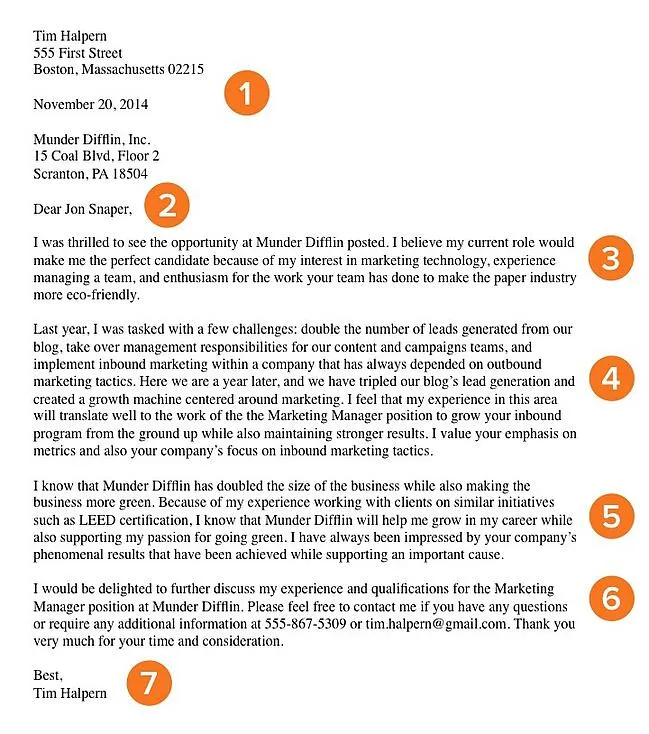
Use a professional sign-off, such as “Sincerely,” “Regards,” or “Best regards.” Leave space for your handwritten signature, if printing and mailing the letter, and type your full name below. This provides a polished and professional finish to your cover letter. Ensure that the closing is consistent with your overall tone and the company’s culture. A professional sign-off helps convey your sincerity and respect.
Formatting Your Cover Letter
Proper formatting enhances the readability and professionalism of your cover letter. It ensures that the information is presented in a clear and organized manner. Attention to detail in formatting demonstrates your professionalism and attention to detail, which are valued by employers. Formatting choices can impact the overall impression of your application, ensuring that it is easy to read and visually appealing.
Font and Font Size
Choose a professional and easy-to-read font, such as Times New Roman, Arial, or Calibri. Use a font size of 11 or 12 points for the body text. Ensure that the font is consistent throughout the entire document. Avoid using overly decorative or unusual fonts, as they can be distracting. Select a font that is clear and doesn’t cause eye strain, making it easier for the hiring manager to read your letter.
Margins and Spacing
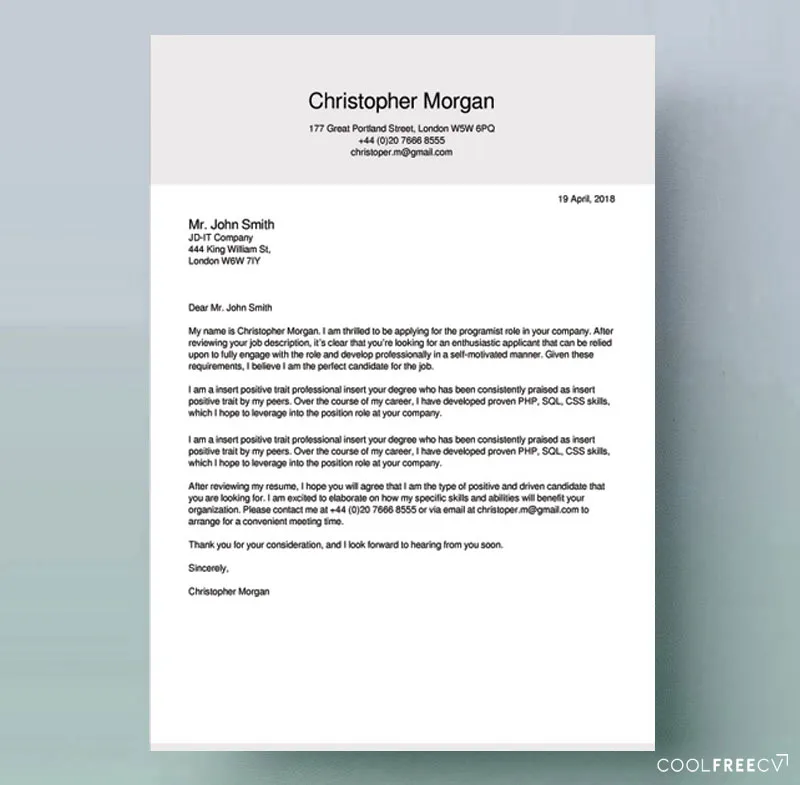
Use standard 1-inch margins on all sides of the document. Use single-spacing for the body of the letter and double-spacing between paragraphs. Proper spacing improves readability and creates a clean, professional look. Ensure that the layout is balanced and visually appealing. Avoid cramped formatting to give the document a more appealing look.
Proofreading and Editing
Proofreading and editing are essential steps in creating a polished cover letter. Errors can undermine your credibility and make you appear careless. Carefully review your cover letter for any grammatical errors, spelling mistakes, and typos. Read the letter aloud to check for awkward phrasing or unclear sentences. It is also recommended to have someone else review your letter to catch any mistakes you may have missed. Double-check all names, titles, and company information for accuracy to ensure that the cover letter conveys a professional image.
Common Mistakes to Avoid
There are several common mistakes that can detract from the effectiveness of your cover letter. Avoiding these pitfalls will increase your chances of making a positive impression. Be aware of these frequently made errors to ensure your application makes the best impression. Avoiding these mistakes enhances your credibility and professionalism, making your letter more effective.
- Using generic language: Tailor your cover letter to each job.
- Making it too long: Keep it concise and focused.
- Repeating your resume: Expand on your resume, don’t simply repeat it.
- Focusing on what you want: Highlight what you can offer the employer.
- Including negative information: Focus on positive aspects of your experience.
- Typos and grammatical errors: Always proofread carefully.
- Sending the wrong cover letter: Ensure it matches the job description.
Sending Your Cover Letter
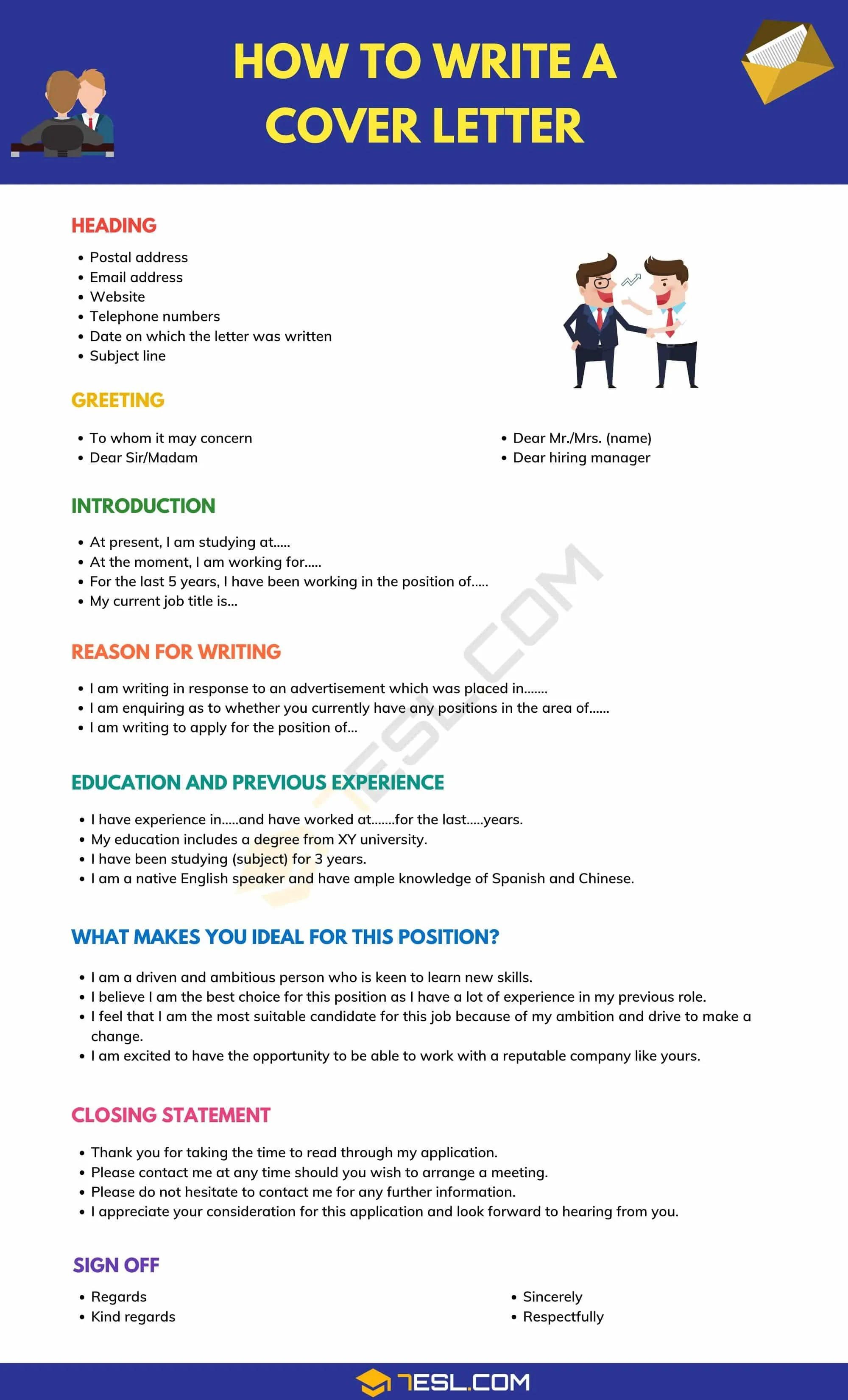
When sending your cover letter, follow the application instructions carefully. Some employers may prefer that you paste your cover letter directly into the body of the email, while others may request that you attach it as a PDF document. Always use a professional email address. Ensure your cover letter is easy to access and properly formatted. Following the application instructions shows your attention to detail and respect for the employer’s process. Sending a professional and well-formatted cover letter demonstrates that you are serious about the job opportunity.
By following these guidelines, you can write a powerful cover letter that effectively highlights your skills, experiences, and qualifications, and significantly increases your chances of landing your dream job. A well-crafted cover letter not only introduces you but also makes a lasting impression on the hiring manager.
